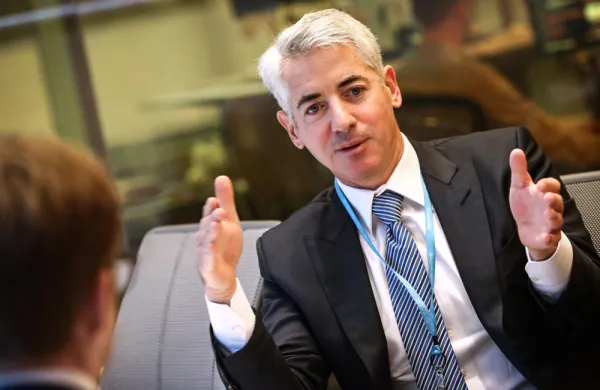The thing I love the most about investing is learning. Investing is a never-ending, open-ended, multidisciplinary learning endeavor. You can always get better. Just like a shark that has to keep moving to live (breathe), an investor has to keep learning and improving to survive. Books are one important learning tool. In this and my next two columns, I’ll share with you an abbreviated list of books that have helped me along the way and may do the same for you.
The following books should help you think like an investor, forcing you to focus on what is under the hood of any stock: a company’s business and the people who run it. The first book is The Essays of Warren Buffett: Lessons for Corporate America, a compilation of the Berkshire Hathaway CEO’s annual letters to shareholders dating back to the 1970s. As you might expect, Buffett’s annual reports themselves are fairly repetitious; his wisdom doesn’t vary that much from year to year. This book organizes main concepts and removes annoying redundancies.
You Can Be a Stock Market Genius: Uncover the Secret Hiding Places of Stock Market Profits by Joel Greenblatt is one of those books that should be read more than once. Greenblatt, the founder of hedge fund Gotham Capital, shares unique approaches to finding undervalued stocks. On top of being a very good investor, Greenblatt has a healthy sense of humor. He also has written The Little Book That Beats the Market . At the end of the book, he offers a “magic formula,” a screen that has beaten the market over a long period of time. The magic screen is very simple: Buy low-price-earnings stocks that have a high return on capital. Low P/E is an indication of cheapness, whereas high return on capital is an indication of competitive advantage and the possibility to grow earnings quickly. Here is the book’s web site, which provides a weekly list of stocks that score high on both measures.
Margin of Safety: Risk-Averse Value Investing Strategies for the Thoughtful Investor by Baupost Group’s Seth Klarman is another gem. Unfortunately, you won’t find this book in bookstores. It is out of print, and it occasionally sells on EBay and Amazon.com for thousands of dollars. This book lacks Greenblatt’s humor, but it is full of Buffett-like lucidity, and it is a must-read for anyone who is serious about value investing. In fact, even though Greenblatt receives the credit for identifying and popularizing spin-offs as an often-mispriced subset of stocks, Klarman dedicates a good portion of a chapter to spin-offs in his book, which was published eight years earlier than Greenblatt’s.
Klarman talks about how investors’ time horizon has shrunk over the years:
Like dogs chasing their own tails, most institutional investors have become locked into a short-term, relative-performance derby.... The short-term orientation of money managers may be exacerbated by the increasing popularity of pension fund consultants. These consultants evaluate numerous money managers, compare their performances, contrast their investment styles, and then make recommendations to their clients. Because their recommendations can have a significant influence on the health of a money management business, the need to impress pension fund consultants may add to the short-term performance pressures on money managers.
Another must-read is The Most Important Thing Illuminated: Uncommon Sense for the Thoughtful Investor by Howard Marks. This book is a compilation of investment letters written by Oaktree Capital Management chairman and co-founder Marks over the past two decades. If I were to judge a book solely by how much highlighting I did while I was reading it, this one would score at the top. Here are some of my Kindle highlights:
It’s hard to consistently do the right thing as an investor. But it’s impossible to consistently do the right thing at the right time. The most we value investors can hope for is to be right about an asset’s value and buy when it’s available for less.
Thus, it seems to me, the choice isn’t really between value and growth, but between value today and value tomorrow. Growth investing represents a bet on company performance that may or may not materialize in the future, while value investing is based primarily on analysis of a company’s current worth.
Risk means uncertainty about which outcome will occur and about the possibility of loss when the unfavorable ones do.
Experience is what you got when you didn’t get what you wanted.
Few people may have heard of The Super Analysts: Conversations with the World’s Leading Stock Market Investors and Analysts by Andrew Leeming, but it is a book well worth reading. The author interviews successful investors (not academics), who discuss their approach to investing and their analyses of common stocks and of some specific industries.
Secrets in Plain Sight: Business & Investing Secrets of Warren Buffett by Jeff Matthews is not another biography of the Oracle of Omaha but rather the most insightful, critical and balanced analysis of Buffett and Berkshire Hathaway I’ve ever read. I also encourage you to read Matthews’s musings on his blog; I’ve been reading it for years.
Finally, I also recommend The Little Book That Builds Wealth: The Knockout Formula for Finding Great Investments by Pat Dorsey. Michael Porter wrote Competitive Strategy a few decades ago, and it quite deservedly turned into a bible of industry analysis that is taught in all business schools and management programs. Dorsey, president of Sanibel Captiva Investment Advisers, adopted Harvard Business School professor Porter’s concepts into this little book and applied them directly to investing. To be honest, if this book had been out when I was teaching my investment class, I’d be using it instead of Porter’s — sorry, Michael!
The right temperament is crucial in investing. Being a critical thinker and knowing how to value stocks are important, but it is all a waste if your emotions get the better of you. The following books will help you recognize the shortcomings of your hard-wiring and help you devise strategies to deal with it.
Psychology of Investing by John Nofsinger is short and to the point. You’ll become an expert on behavioral investing in about an hour. Well, not quite, but close.
The Little Book of Behavioral Investing: How Not to Be Your Own Worst Enemy by James Montier is another good read. This book is written for value investors by a value investor who happens to be a leading thinker in behavioral finance. This is the only behavioral investing book that I am aware of that quotes Ben Graham, Seth Klarman, John Templeton and Warren Buffett throughout the book and synthesizes their lessons with those of behavioral investing.
The two books above cover many of the topics in Your Money and Your Brain: How the New Science of Neuroeconomics Can Help Make You Rich, written by Wall Street Journal columnist Jason Zweig. His Chapter 10 makes the book a must-read: It addresses happiness — yes, happiness. Even though, as most of us know, money doesn’t buy happiness (unless you are starving or living in a cardboard box), money spent on buying things brings a burst of happiness that quickly fades away. Think of how happy you were on the day you bought your first car. Now fast-forward a few weeks later: The rush almost certainly has faded. Money spent on experiences, on the other hand, brings a higher utility of happiness. Recollecting experience brings happiness (so take a lot of pictures and videos to remember things better). Zweig also provides a list of things you can do that will make you happy, and none of them require you to spend a penny, which is a big positive in today’s economy.






